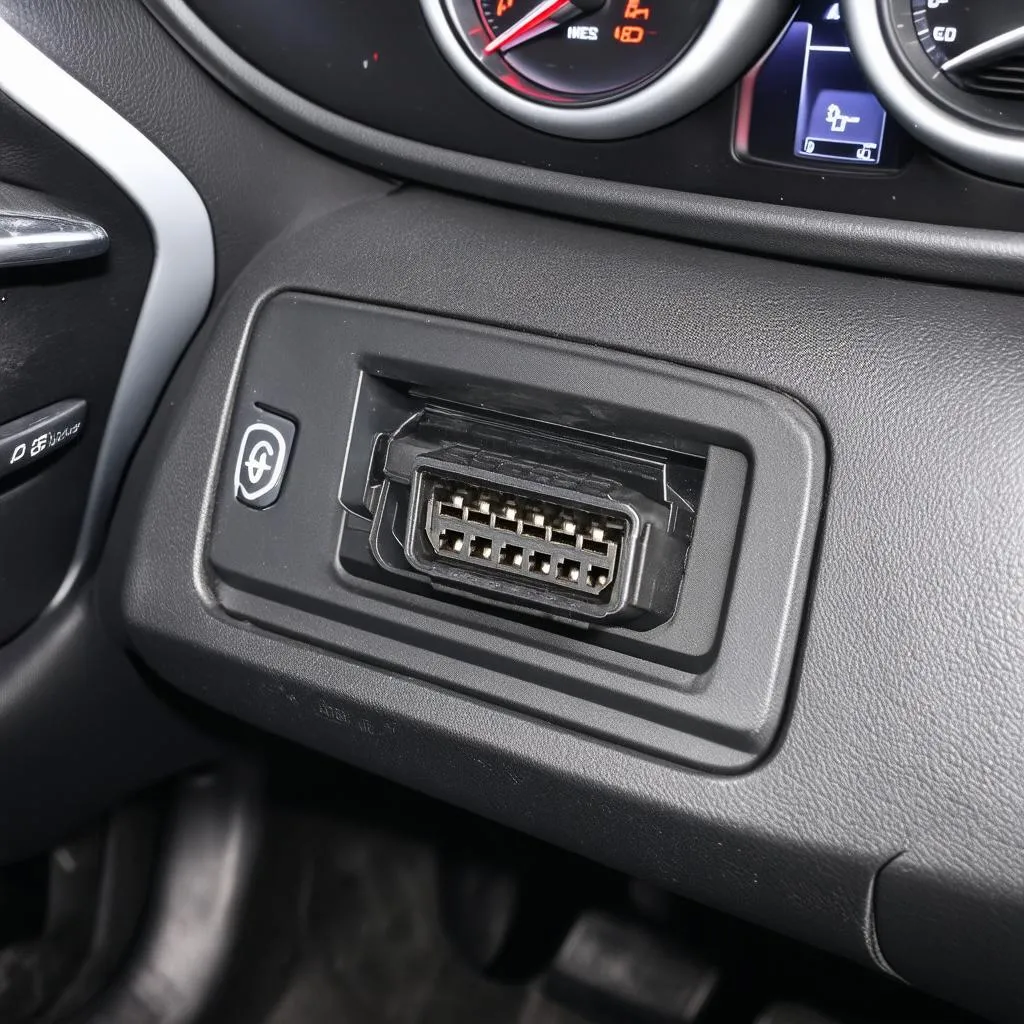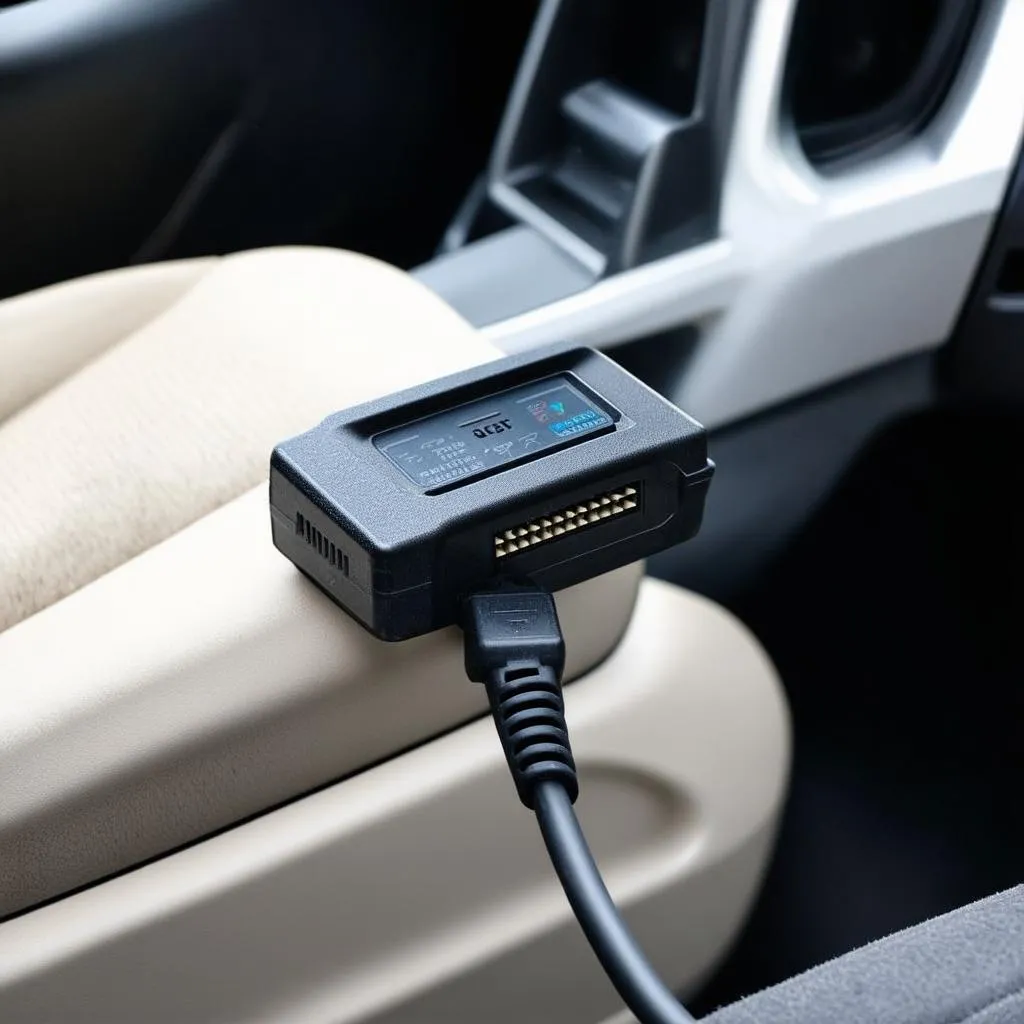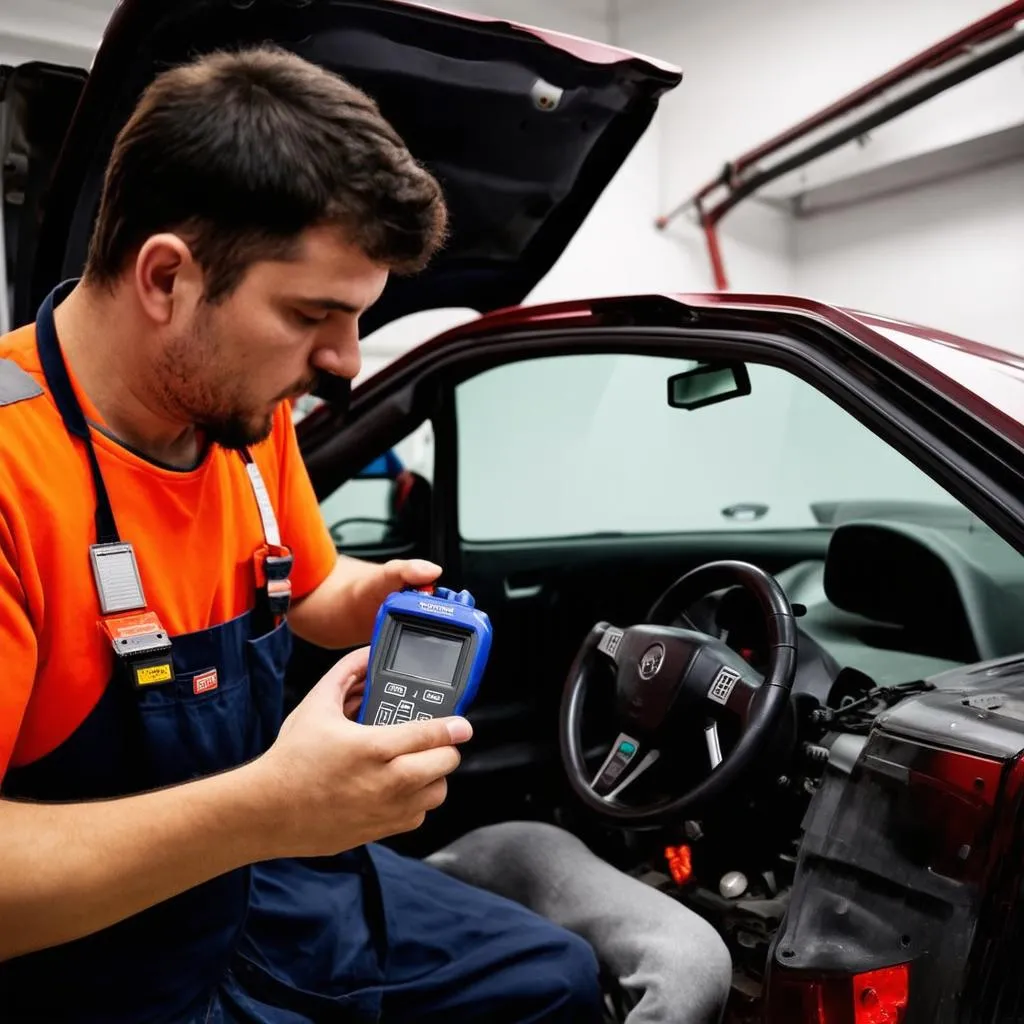Ever felt like your car was speaking a language you just couldn’t understand? Those blinking dashboard lights can feel like cryptic messages, right? Well, that’s where your car’s onboard diagnostic system, or OBD, comes in. And to understand what it’s saying, you need an OBD scanner, a handy tool for both car enthusiasts and everyday drivers. But before you can unlock your car’s secrets, you need to know where to plug in that OBD scanner. Let’s demystify the process!
Understanding the OBD Port & Its Significance
Think of the OBD port as your car’s data port. It’s the bridge between your car’s computer and a diagnostic tool, like an OBD scanner. This port allows you to tap into the electronic brain of your car and access a wealth of information about its health and performance.
Why is the OBD port so important?
- Diagnostics: It helps identify why those pesky warning lights are on, saving you potential headaches and costly trips to the mechanic.
- Performance Monitoring: It provides real-time data on your car’s engine, transmission, emissions, and more, allowing you to monitor performance and fuel efficiency.
- Customization: For the tech-savvy, it even allows you to make minor adjustments to your car’s settings.
Finding the Elusive OBD Port
Most cars manufactured after 1996 have a standardized OBD-II port. Locating it is usually easier than you might think. Here are the most common hiding spots:
- Under the Dashboard: Look beneath the steering wheel, around the area where your knees might touch.
- Near the Fuse Box: Many manufacturers place the OBD port close to the fuse box, either on the driver’s or passenger’s side.
- Behind the Ashtray: In some older car models, you might find it tucked away behind a removable panel.
Still can’t find it? Consult your owner’s manual or do a quick online search for “[your car model] OBD port location.”
 OBD Port Location
OBD Port Location
Connecting Your OBD Scanner: A Step-by-Step Guide
Once you’ve located the OBD port, connecting your scanner is a breeze:
- Turn off your engine: Ensure your car is completely off before plugging in the scanner to avoid any electrical mishaps.
- Insert the Scanner: Align the pins on the scanner with the port and gently push it in until it clicks securely.
- Turn on the Ignition: Turn the key to the “on” position (don’t start the engine). This will power up the scanner.
- Follow On-Screen Instructions: Your scanner’s display will guide you through the process of reading codes, accessing data, or performing any desired functions.
Troubleshooting Tips
- Scanner Doesn’t Power On? Double-check that the ignition is in the “on” position.
- Connection Issues? Ensure the scanner is properly seated in the port. A loose connection can disrupt communication.
- Error Messages? These could indicate a problem with the scanner itself or a more serious issue with your car’s computer system. Consult your scanner’s manual or seek professional help if needed.
Beyond the Basics: OBD Scanners and You
OBD scanners are no longer tools reserved for mechanics. With so many affordable and user-friendly options available, they’re becoming increasingly popular among everyday drivers.
- Empower Yourself: Take control of your car’s maintenance by diagnosing minor issues before they escalate.
- Save Money: Identifying problems early on can save you expensive repair costs down the road.
- Peace of Mind: Get real-time insights into your car’s health, giving you peace of mind on the road.
 OBD Scanner Connected
OBD Scanner Connected
Frequently Asked Questions
What if my car is older than 1996? Cars manufactured before this date may have a different type of diagnostic port or require a specialized scanner.
Can I drive with the OBD scanner plugged in? Yes, most scanners are designed for continuous use. However, it’s best to consult your scanner’s manual for specific recommendations. For more information on this you can read our article: “Can you drive with OBD scanner attached?”.
What do the OBD codes mean? OBD codes are alphanumeric codes that correspond to specific issues. You can easily find their meanings online or through your scanner’s software.
Can I fix the problems myself? While OBD scanners can help you identify problems, it’s important to remember they don’t fix them. Some issues may be simple DIY fixes, while others require professional attention.
Explore Further
Interested in learning more about your car’s specific diagnostic system or finding the right OBD scanner for your needs? Check out these related articles:
- 2019 Dodge OBD: How to Plug Scanner
- VeePeak OBDCheck BLE Bluetooth OBD II Scanner
- 2012 Subaru Forester OBD Port Location
Need expert help with your OBD scanner setup or automotive diagnostics? Contact our team of specialists on Whatsapp at +84767531508. We’re available 24/7 to assist you.
 Mechanic using OBD Scanner
Mechanic using OBD Scanner
Remember, knowledge is power, especially when it comes to your car. So, embrace the power of the OBD port and unlock a deeper understanding of your vehicle’s inner workings. Happy driving!